
The Jacksonville History Center presented its annual Jacksonville’s Endangered Historic Properties report May 14 in the renovated Florida Casket Company building at 314 Palmetto St. Downtown.
The presentation focused on preservation success stories including the Jessie Ball duPont Center, The Debs Store and the former Florida Casket Company building.
The 2025 list of endangered properties:
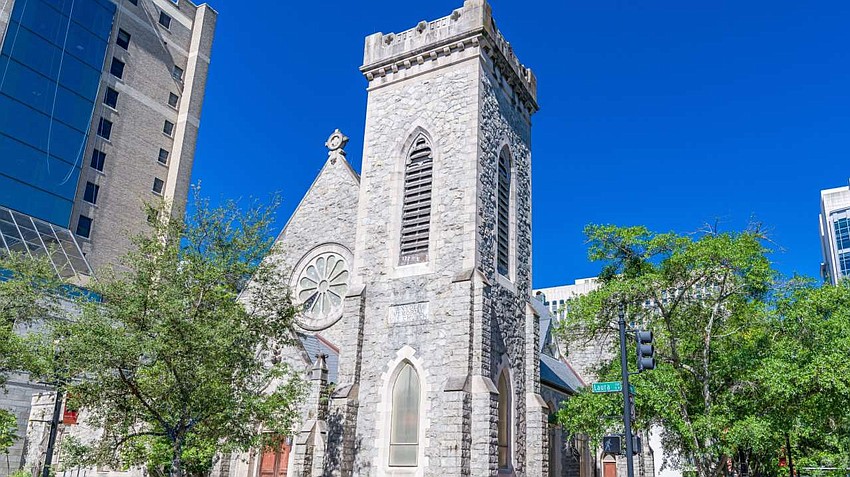
Snyder Memorial Methodist Church
226 N. Laura St.
First known as Trinity Methodist Episcopal Church, this church near City Hall is an example of Gothic Revival style.
Built in 1902–03, it was one of the first structures rebuilt after the 1901 fire. Owned by the city of Jacksonville, it has remained vacant for most of the past decade.

The Laura Street Trio
Forsyth and Laura streets
The Laura Street Trio comprises the Florida Life Building, the Bisbee Building and the Old Florida National Bank, also known as the Marble Bank.
The Marble Bank was designed by architect Edwin H. Glidden in the Classical Revival style and built in 1902. The Bisbee Building was constructed between 1908 and 1909, designed by Henry J. Klutho in the Prairie style. The 11-story Florida Life Building was also designed by Klutho, built between 1911 and 1912, and is the only one of the three that faces Laura Street.
After standing vacant for years, the Trio was purchased by the city of Jacksonville in 2002. In 2011, the Atkins Group began renovations to convert the site into a Courtyard Marriott Hotel.
In April 2025, the city of Jacksonville filed a default motion against Laura Trio LLC, seeking to resume foreclosure proceedings and initiate a public auction of the buildings, citing more than $800,000 in unpaid code violation fines and the owner’s failure to respond to the city’s complaint.
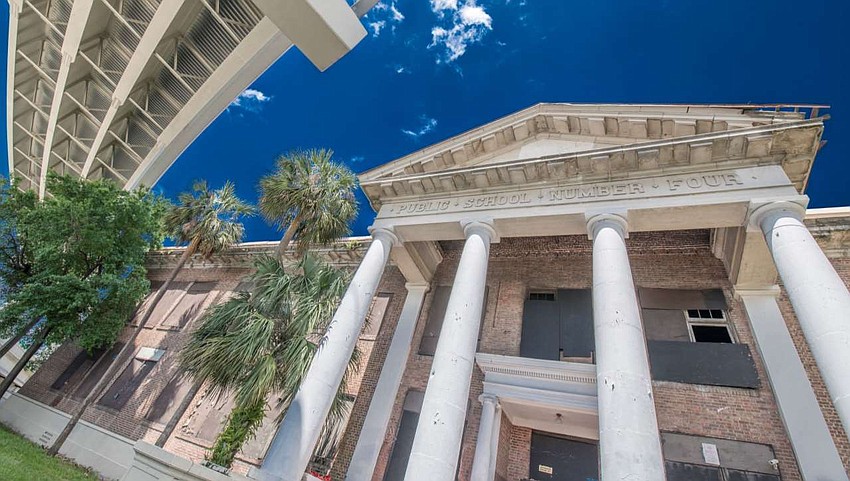
Annie Lytle Public School
1011 Peninsular Place (originally Gilmore Street)
Built in 1917, Public School No. 4 overlooked Riverside Park before construction of the Interstate 95 and Interstate 10 interchange isolated it.
Vacant since the 1970s, the building has faced numerous threats of demolition despite its designation as a local historic landmark.

Atlantic Beach Elementary School
275 Sherry Drive
Public School No. 65 was built in 1940, funded by the federal Works Progress Administration, which paid half of the $60,000 cost.

West Riverside Elementary School
2801 Herschel St.
West Riverside Elementary School was built in 1911 as Public School No. 12. Additions to the building were designed by architect Henry J. Klutho in 1916 and 1922.
Located within a registered historic district, the building benefits from certain protections against demolition.

Fishweir Elementary School
3977 Herschel St.
Public School No. 20 was built on a former cow pasture in 1917 by O.P. Woodcock, with additions in 1926, 1928 and 1930.

South San Jose/Kings Trail Elementary School
7401 Old Kings Road S.
Opened in 1958 as South San Jose Elementary School, it was renamed Kings Trail in 1976 during the American Bicentennial to reflect its location on the historic Kings Road dating to the 1770s. The Duval County School Board will permanently close the school at the end of the current school year.
Once surrounded by Skinners Dairy Farm, the site is now bordered by apartment complexes and may be redeveloped.

Annie R. Morgan Elementary School
964 St. Clair St.
Public School No. 21 opened in 1916, one of 12 schools funded by a $1 million bond issue approved by Duval County voters in 1915. The school is still open, but slated for closure.
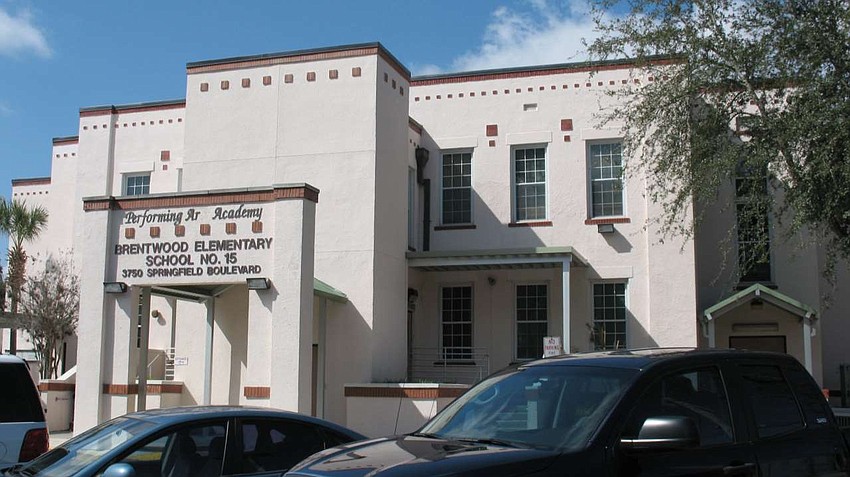
Brentwood Elementary School
3750 Springfield Blvd.
Public School No. 15 was built in 1915 and closed in 2021.
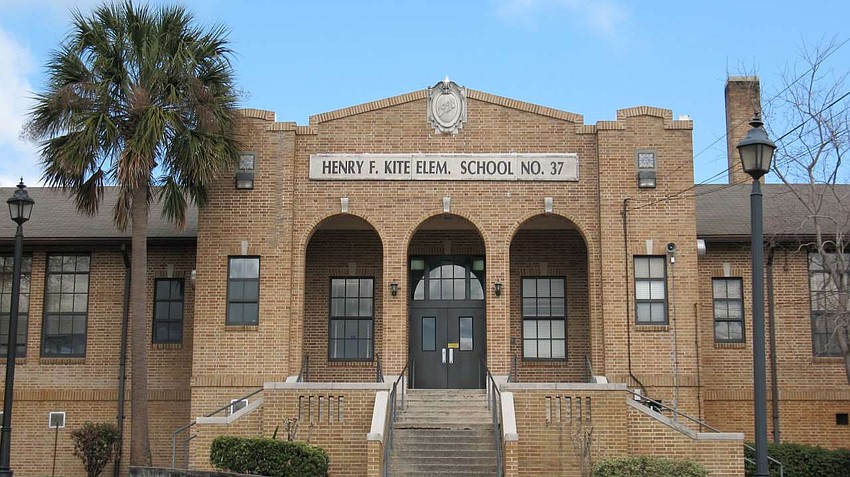
Henry F. Kite Elementary School
9430 Lem Turner Road
Riverview Elementary School No. 37 was completed in 1929. Between 1930 and 1960, Henry F. Kite was the school’s principal, and after his retirement, the school was renamed in his honor in 1964. It closed in 2023.
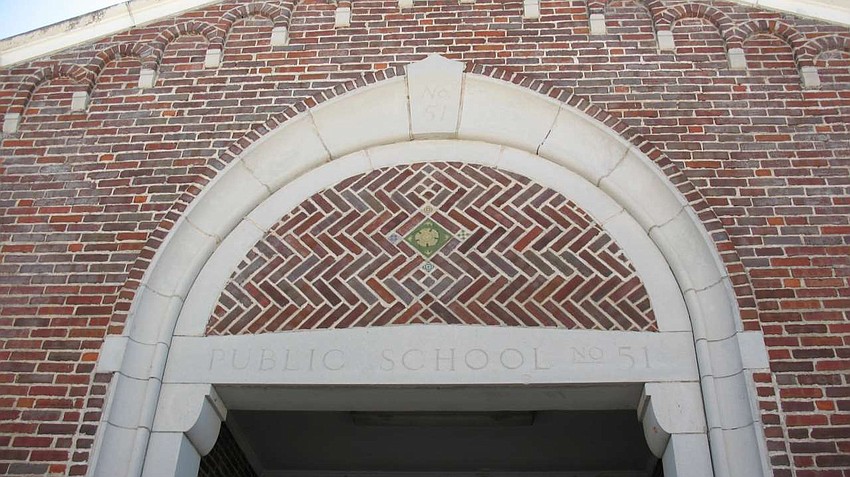
Whitehouse Elementary School
3750 Springfield Blvd.
It opened as Public School No. 51 in 1926 with five classrooms and a library.
From 1955-68, 18 classrooms were added. In 1987, the original building was renovated and a new building added to provide office space. The original structure was again renovated in 2011, adding a cafetorium and four more classrooms.
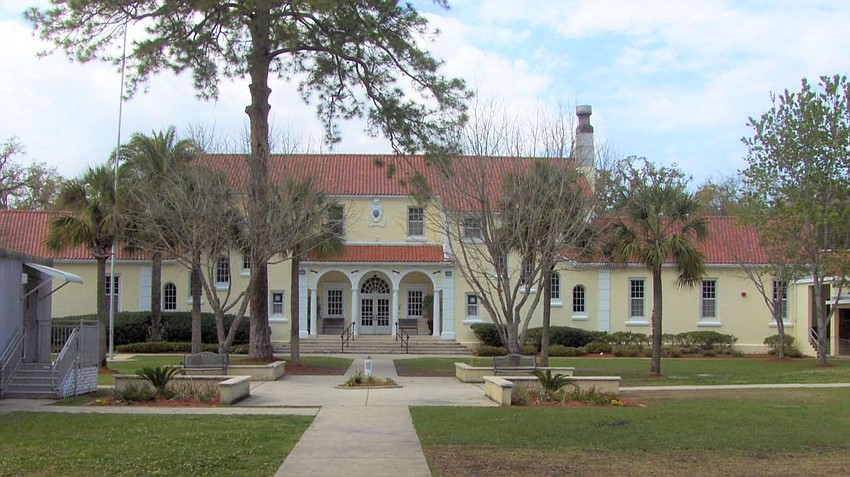
Ortega Elementary School
4010 Baltic St.
Public School No. 16 was built in 1923, replacing the original school circa 1914 building.
Under Duval County Public Schools’ revised Master Facilities Plan, the school is scheduled to close in 2030.
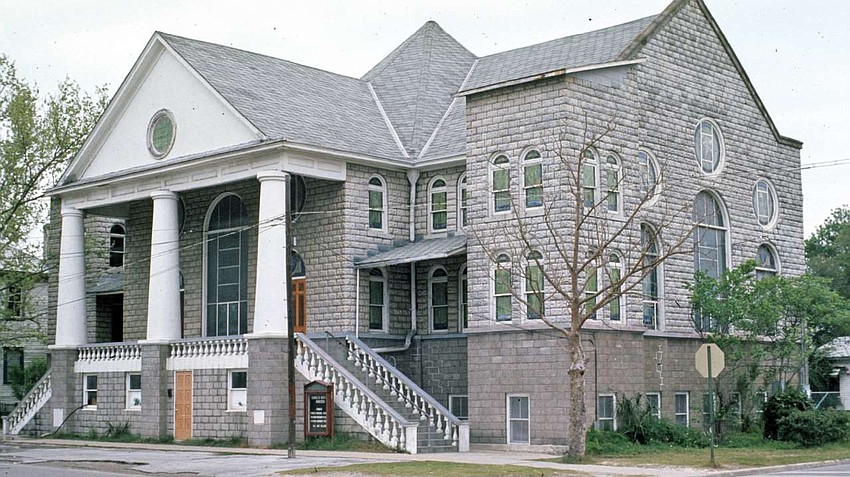
Mount Olive A.M.E. Church
841 Franklin St.
The first sanctuary of Mount Olive A.M.E. Church was a wooden building constructed on this site in 1887. By 1920, the congregation had outgrown the original structure and raised money for the current structure designed by Richard L. Brown, Jacksonville’s first Black architect.
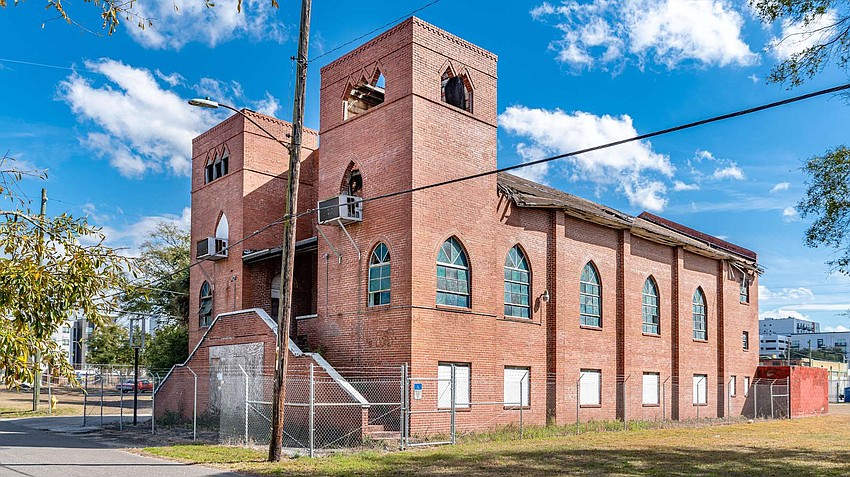
Mount Calvary Baptist Church
301 Spruce St.
Mount Calvary Baptist Church began in the Brooklyn neighborhood in 1892 with a one-story wooden building built on this site for its African American congregation.
The church’s ninth pastor, The Rev. William Hill, arrived in 1942. Hill envisioned a grand building that would reflect the role of the church as an anchor for the Brooklyn community.
Completed in 1949, the brick sanctuary with twin square towers served the congregation until it moved from Brooklyn to a new location in 1999.
Vacant ever since, it is the largest remaining building from Brooklyn’s historic Black community.

Wesley Manor (Westminster Woods)
25 Florida 13
Designed by Jacksonville architect Robert C. Broward, Wesley Manor was the largest commission of his career and one of his most innovative.
A 2015 St. Johns County PUD calls for the demolition and replacement of nearly all of the Broward structures.
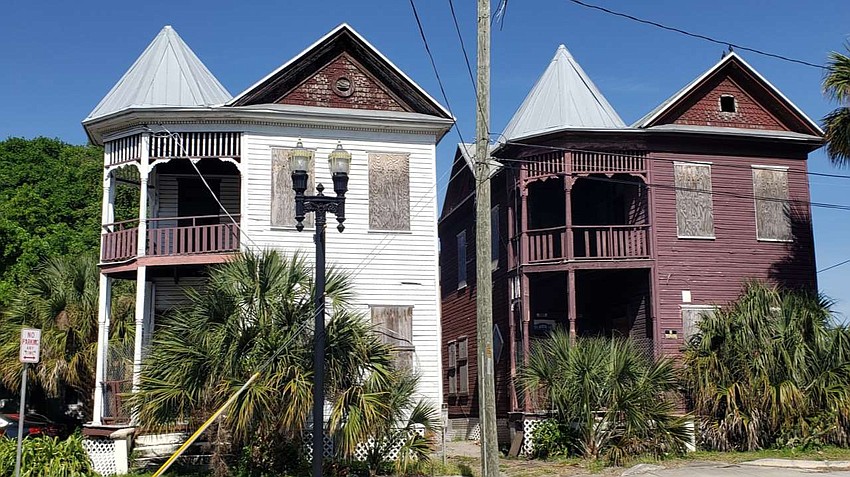
Victorian duplexes
316 and 320 Jefferson St.
The two-story twin duplexes were built in 1906 and demonstrate influence of the Queen Anne style.
They were purchased by Clara White Mission in 2014.
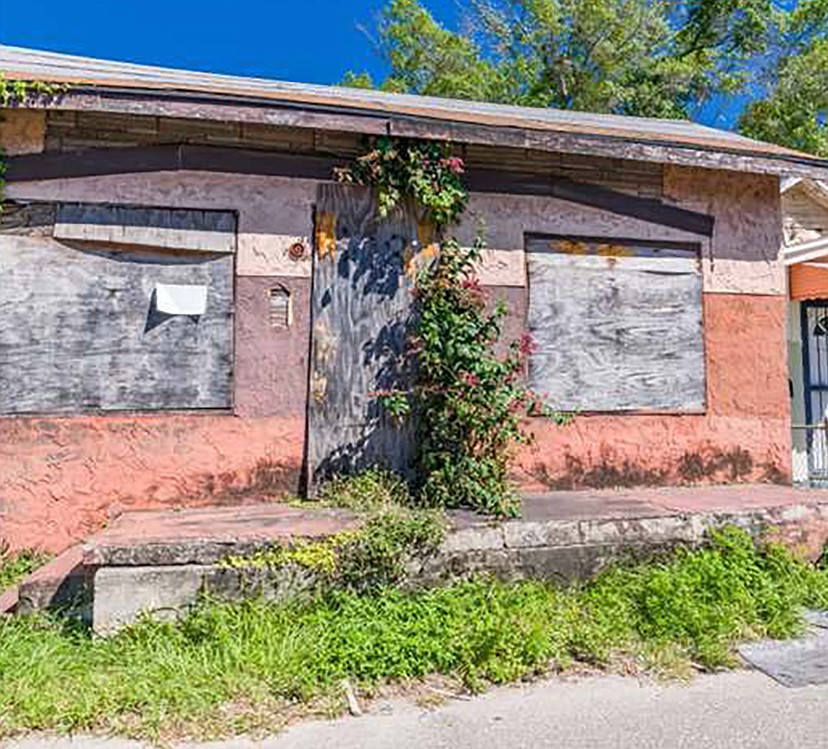
Post-Civil War cottage
328 Chelsea St.
A contingent of Black Union soldiers came to Jacksonville in 1864 during the town’s fourth occupation of the Civil War.
In 1868, Miles Price platted Brooklyn and began selling lots. Some of the Black Union veterans remained or returned to live in the neighborhood, making the northwestern portion of Brooklyn a Black residential community.
This is the last of the cottages constructed after the war in this part of Brooklyn, providing a link with Jacksonville’s Reconstruction era.
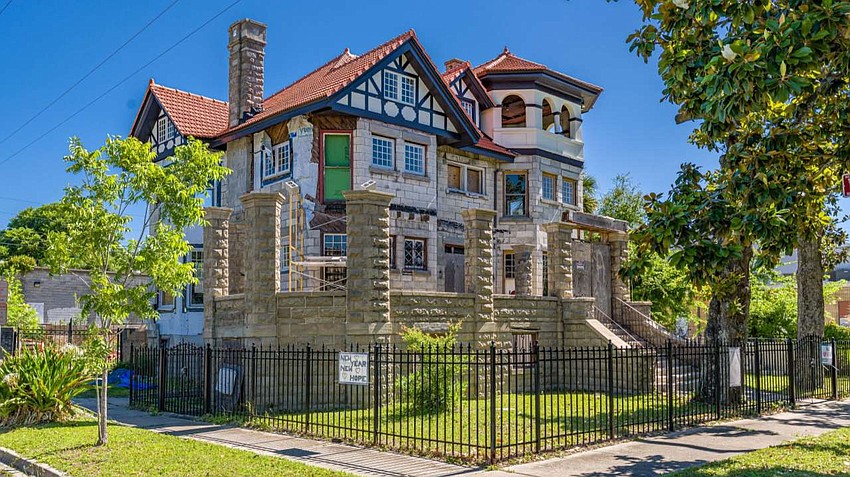
Dr. Horace R. Drew Mansion
245 W. Third St.
Dr. Horace R. Drew, a physician and grandson of Jacksonville pioneer Columbus Drew, was the first owner and occupant of this house built around 1909.
It is one of the most significant residences in the Springfield Historic District and in recent years has been deteriorating.
245 West 3rd ST LLC was in the process of restoring the Drew mansion overlooking Klutho Park, but little work has been done for several years.

Scottish Rite Masonic Temple
965 Hubbard St.
Built from 1924 to 1926 at a cost of nearly $300,000, it was the first permanent home of the Jacksonville Scottish Rite, a group formed in 1892. Still in use by the Masons, the building is in serious need of repair.

Independent Life Building
233 W. Duval St.
KBJ Architects designed the Independent Life and Accident Insurance Co. building, completed in 1955.
Independent Life relocated its offices in 1975 to what is now 1 Independent Square. The Jacksonville Electric Authority acquired the Duval Street building in 1976 and vacated it in the 1990s.
The building was designated a local landmark in 2020.
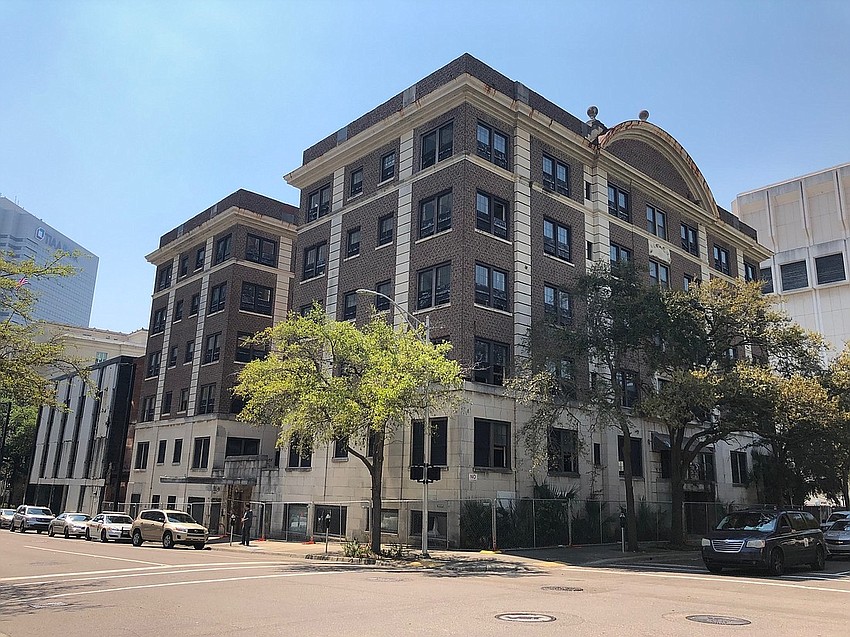
Ambassador Hotel
420 N. Julia St.
The building was completed in 1923 at a cost of $300,000. In 1924, it was described as “Jacksonville’s first big Downtown apartment building.”
Renamed the Ambassador Hotel in 1955, the building received National Historic designation in 1983.
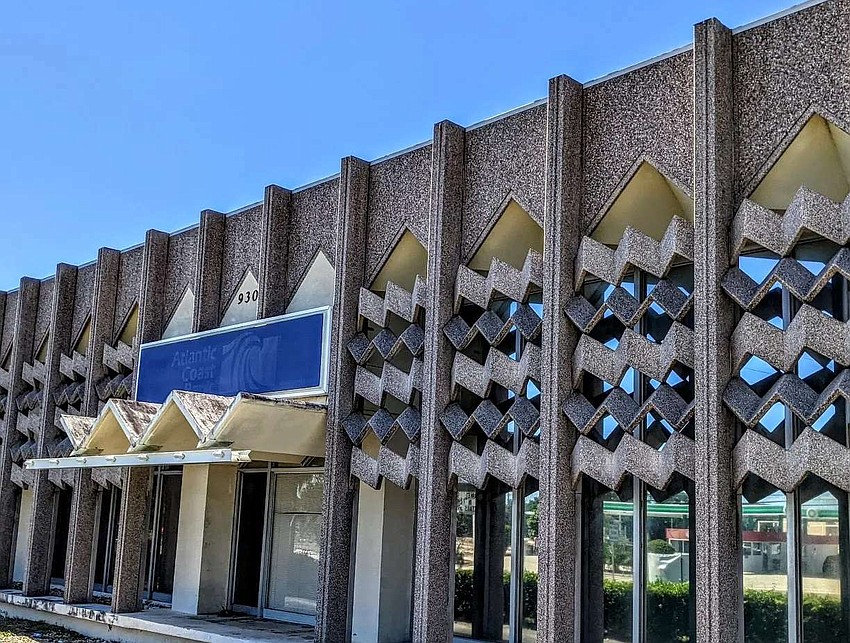
Arlington Federal Savings & Loan
930 University Blvd. N.
Built in 1961 and known for its distinctive mid-century modern latticework facade and stone surfaces that resemble waves, the building stands out as an architectural example of its era.
The Jacksonville Historical Society, in partnership with Old Arlington Inc., successfully secured its designation as a local historic landmark.
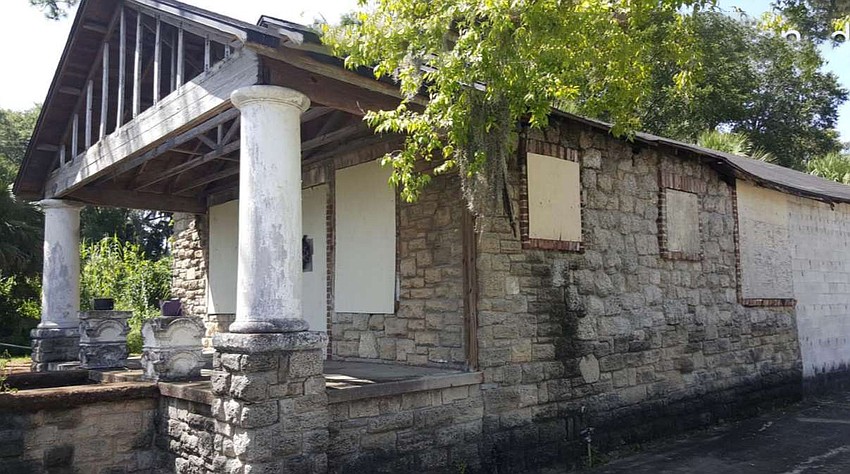
Eartha M.M. White Youth Recreation Center
4850 Moncrief Road
Built in 1938 as a residence/museum in the Bungalow architectural style, the building included two adjacent columns with Corinthian capitals, reportedly rescued from a demolished Downtown building. It is also one of few buildings and houses remaining from the period when Moncrief Springs was a popular resort for the African American community.
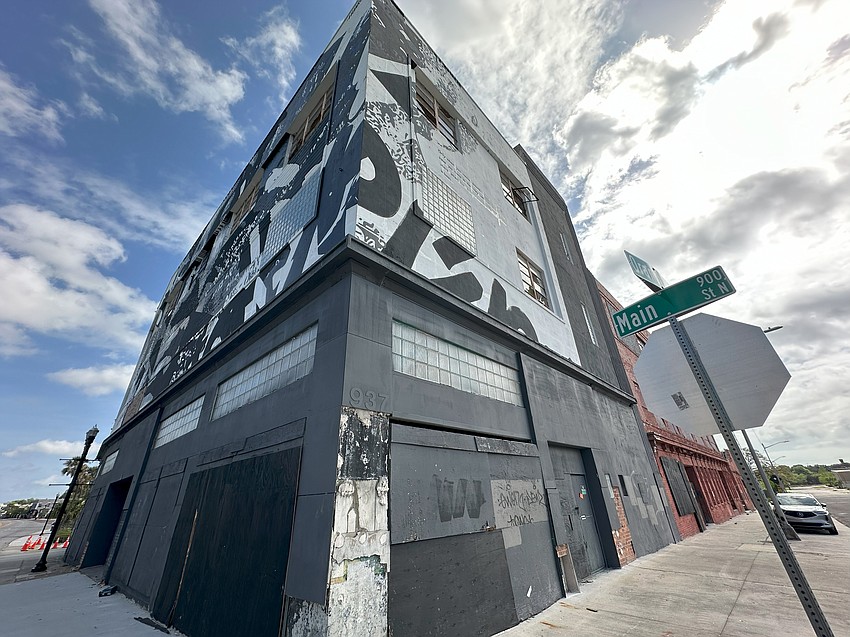
Claude Nolan Cadillac Building
937 N. Main St.
Built in 1912, this was an important Prairie-style building designed by architect Henry J. Klutho for Claude Nolan, who started his Cadillac dealership in 1907.
In addition to founding the oldest automobile business in Jacksonville, Nolan is credited with originating the idea of selling automobiles on installments in 1910, a practice that was soon adopted by the entire automotive industry.
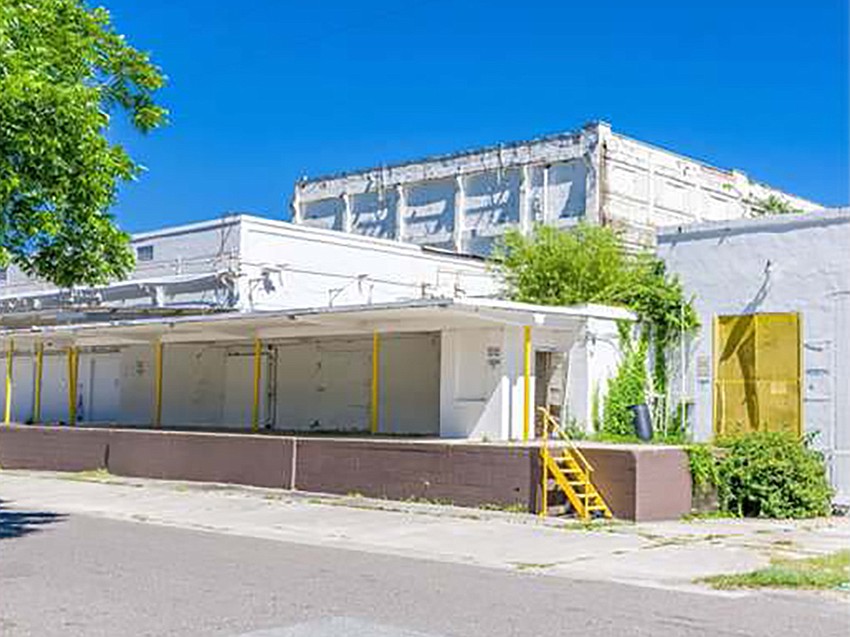
JAX Brewing Company
1429 W. 16th St.
In 1913, German-born William Ostner, a brewer from St. Louis, moved to Jacksonville to start a brewery.
It was the second brewery to open in Florida, and the popularity of Ostner’s JAX beer led to the expansion of the facility over the years.

Universal Marion/JEA Building
21 W. Church St.
Built in 1963, this structure is one of the masterpieces of Downtown’s mid-century modern architecture. Listed on the National Register of Historic Places, it is also a contributing property in the Downtown Jacksonville Historic District.
In 2023, JEA vacated the building for its new headquarters and placed the structure on the market.

Charles E. Bennett Federal Building
400 W. Bay St.
Completed in 1966, the building was named for U.S. Rep. Charles E. Bennett, who served Florida from 1949 to 1993.
Renovated in 2004, a defining architectural feature of the building is Evolution of Government, a 550-foot-long concrete and aggregate relief sculpture commissioned through the Fine Arts in New Federal Buildings Program.
In early 2025, the General Services Administration listed the building for potential sale as a “non-core” property. Although the list was later removed from the agency’s website, the building’s future remains uncertain.
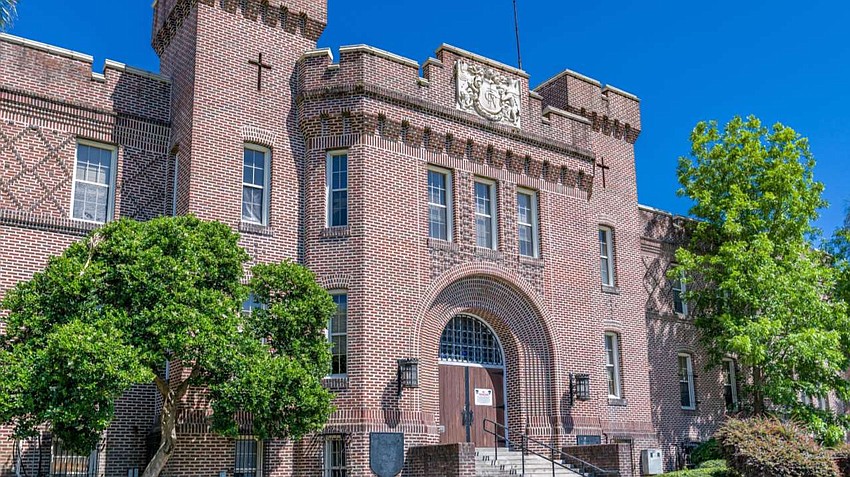
Old Duval County Armory
851 N. Market St.
Completed in 1916, the armory was designed to serve as a facility for local National Guard troops. In 1962, the armory was renamed the Maxwell G. Snyder Armory in honor of the commanding general of the National Guard’s 48th Armored Division.
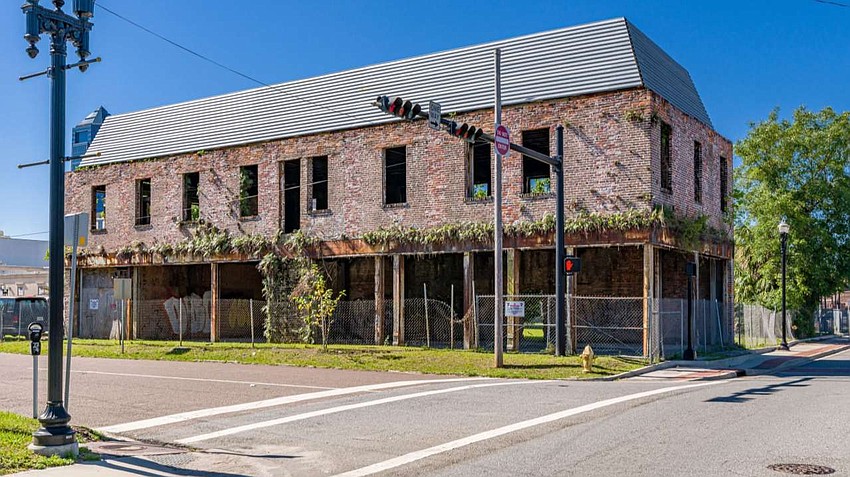
Genovar’s Hall
644 W. Ashley St.
Constructed around 1895 by Sebastian Genovar to house his grocery business and later a saloon, this building sits at the intersection of Ashley and Jefferson streets — once the heart of nightlife for LaVilla’s African American community during the jazz era of the 1920s and ’30s.
Its dual significance as a rare pre-1901 fire structure and a landmark from the swing-era music scene of Black Jacksonville makes it a vital piece of the city’s cultural history and a building in urgent need of restoration.

Ford Motor Co. assembly plant
1900 Wambolt St.
The building was constructed in 1924 and was instrumental in assembling Ford Model T and Model A vehicles. It remained operational until the late 1960s.
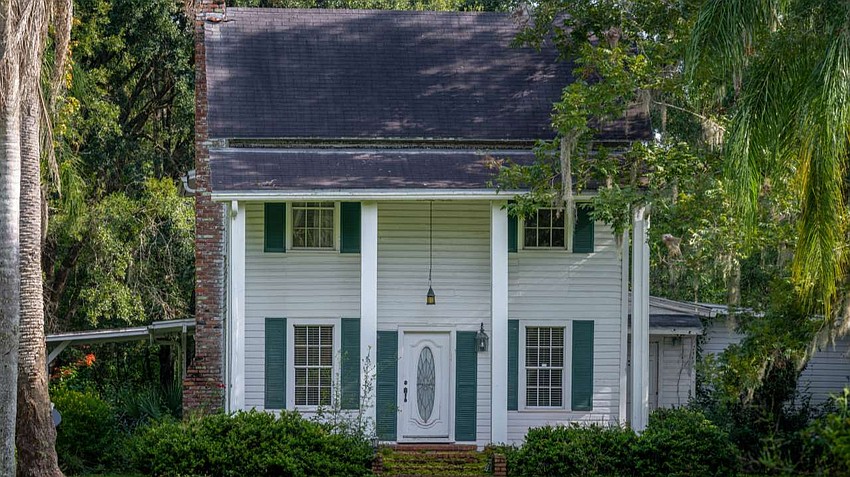
Fleming Bowden Residence/Fairbanks Road Residences
3323 Loretto Road/3301 and 3318 Fairbanks Road
The 1907 Fleming Bowden Residence in Mandarin, was a two-story farmhouse built for Fleming H. Bowden, a local blacksmith, vegetable peddler and longtime Duval County Supervisor of Elections.
Nearby, the early 1900s homes at 3301 and 3318 Fairbanks Road were part of the same historic landscape.
In January 2024, the property was sold to accommodate a planned residential subdivision. Prior to redevelopment, proposals to preserve or relocate the structures were considered but not pursued and the buildings were demolished as part of the project.

Jessie Ball duPont Center
40 E. Adams St.
The former Haydon Burns Library, built in 1965, was considered state-of-the-art at the time. The building closed in 2005.
In 2013, the Jessie Ball duPont Fund purchased the decommissioned and deteriorating structure and launched a renovation. Completed in 2015, the revitalized building now is a hub for local nonprofits and is a model for the adaptive reuse of historic structures.

Elena Flats
122 E. Duval St.
Built in 1909, Elena Flats is one of the last remaining historic structures from what was once a vibrant Downtown rooming house district developed after the Great Fire of 1901.
Originally serving middle-class workers, it was converted in the 1950s into a rooming house. By the late 1970s, the building had been subdivided into as many as 25 rooms. Over the following decades, it suffered from neglect and deterioration.
Last used for nightly and weekly rentals in the early 2000s, the building was purchased in 2015 by investors. After securing historic tax credits and investing nearly $3 million in restoration, Elena Flats was brought back to life as a quadplex.

Bostwick Building/Cowford Chophouse
101 E. Bay St.
Built in 1902 for the First National Bank and expanded in 1919 by Guaranty Trust and Savings Bank, this historic building has seen several transformations over the years.
Following a series of bank failures, the Bostwick family purchased the property in the 1930s. In 2013, after the owners fell behind on property taxes and sought approval for demolition, the city won a foreclosure suit and forced the sale.
A restaurant group acquired the building in 2014 and opened the Cowford Chophouse in 2017, preserving a piece of Downtown’s architectural heritage.

The Debs Store
1478 Florida Ave.
The Debs Store served as the heart of Jacksonville’s Historic Eastside for nearly 80 years. Built in 1913 for Edward D. Mixson, it was purchased in 1927 by Lebanese immigrant Nicolas Debs, who opened a family-run grocery business.
His sons, Nick and Gene, operated the store until 2011. In recent years, Nicolas’ grandson, Joe Debs, partnered with LIFT JAX to restore the building as a neighborhood grocery store.
Reopened as The Corner at Debs in September 2024, it now houses a fresh food market, along with career and financial services for area residents.

John Gorrie Junior High School/John Gorrie a condominium
2525 College St.
Named for the inventor of mechanical cooling, John Gorrie Junior High School was built in 1923.
Listed on the local and National Register of Historic Places, the school stood unoccupied from the 1970s and fell into neglect. In 2009, philanthropist Delores Barr Weaver purchased the building and launched a restoration project, transforming the former classrooms into residential condominiums.
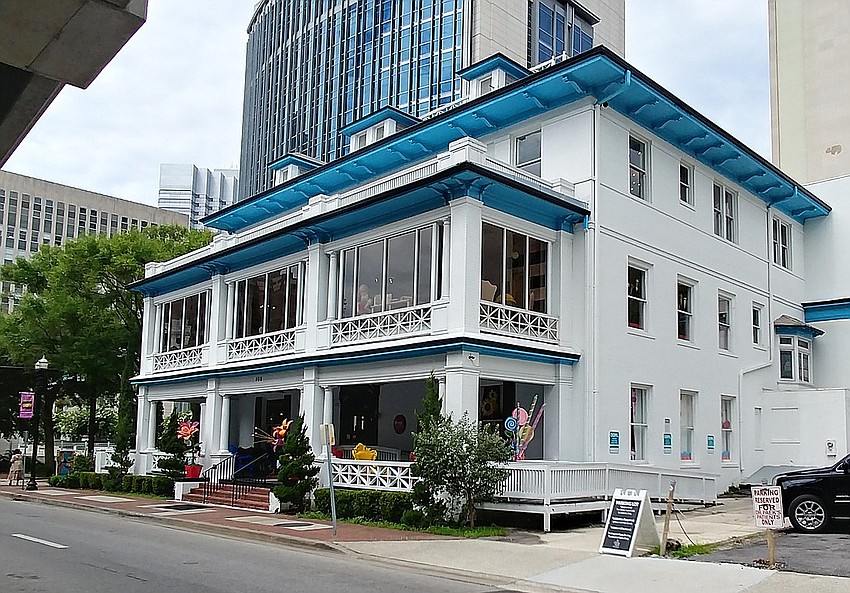
Seminole Building/Sweet Pete’s
400 N. Hogan St.
Built in 1903, the building was for decades the Seminole Club, a private men’s club.
It was renovated in 1975 to include elevators but closed in 1989 and again in 2004. Designated a historic structure in 2006, the building underwent a major renovation in 2014, including the transformation of an old basketball court into a candy production area.
Today, it is home to the Sweet Pete’s candy company and a restaurant.

Barnett Bank Building
112 W. Adams St.
This 18-story structure opened in 1926 and was the city’s tallest building at the time.
In 2013, Southeast Development Group acquired the building and began rehabilitation in 2017.
Completed in two years, the $53 million project now houses a commercial bank, a local newspaper and residential apartments, an example of historic preservation and mixed-use redevelopment.

Brewster Hospital
843 W. Monroe St.
Built in 1885 as a private residence, the Brewster Hospital building later became associated with the city’s first hospital for African Americans, named in honor of early benefactor Mrs. George A. Brewster.
Vacant since 1966, the building was added to the National Register of Historic Places in 1976.
In 2005, the city of Jacksonville relocated the structure from 915 W. Monroe St. to its current site and invested $1.2 million in its rehabilitation for adaptive reuse.
In 2020, the North Florida Land Trust became the building’s primary tenant.

Florida Baptist Convention Building
218 W. Church St.
Built between 1924 and 1925, this was the last Downtown office building designed by architect Henry J. Klutho and is now recognized as a historic landmark.
Vacant for nearly 30 years, the reinforced concrete structure fell into disrepair before being purchased in 2020 by JWB Real Estate Capital. The building has since been restored and converted into a mixed-use space featuring restaurant and retail suites, along with 24 studio and one-bedroom apartments.

Federal Reserve Building
424 N. Hogan St.
Built in 1923, the Federal Reserve Building is designed in the Renaissance Revival style. It was a branch of the Federal Reserve Bank and is now listed as a National Historic Landmark.
Abandoned for more than 40 years, the building was purchased in 2020 by JWB Real Estate Capital and is being redeveloped as a mixed-use space featuring restaurant, business and event venues.

Fire Station Museum
620 E. Bay St.
In 1886, the Jacksonville City Council established a professional fire department, initially composed of three stations and 17 men. Station 3, known as the Catherine Street Fire Station, was located at 500 E. Bay Street and was staffed entirely by African American firefighters.
After the station was disbanded in 1933, the building was repurposed for use as a fire department workshop and later as a storage facility. It was added to the U.S. National Register of Historic Places in 1972 and converted into the Jacksonville Fire Museum in 1982.
The structure was relocated to Metropolitan Park in 1994 and moved again to Bay Street in 2022.